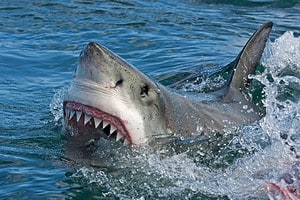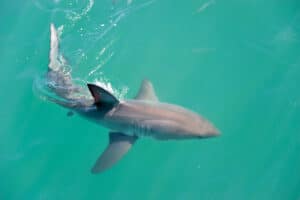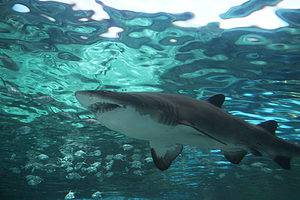Continue reading for our analysis...
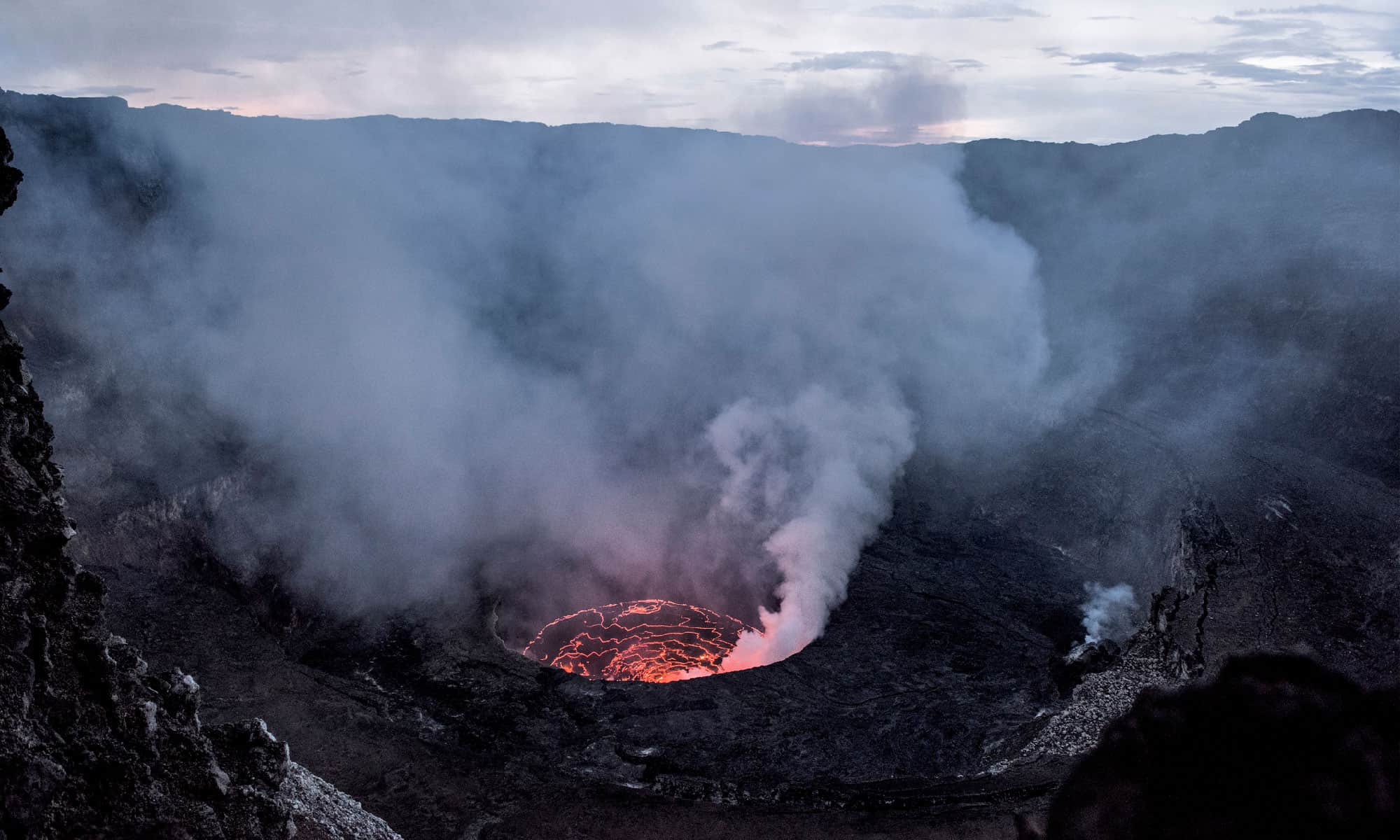
Very little is known about the Pacific sleeper shark. In fact, not much is known about any of the three closely-related species of sleeper sharks.
They’re slow-moving (hence the name “sleeper”), and much of their activity takes place near the bottom of the sea. They plunge incredibly deep as well, dropping down to 6,500 feet or deeper.
They’ve been spotted at lengths of 23 feet, and the average adult size is something to the tune of 800 pounds. These monsters float like low-hanging blimps above the ocean floor, vacuuming up the likes of giant Pacific octopuses and squid.
They’re spooky, rare, and only supposed to dwell in Arctic climates. That’s part of the reason the video you’re about to see is so incredible.
The Context of the Video
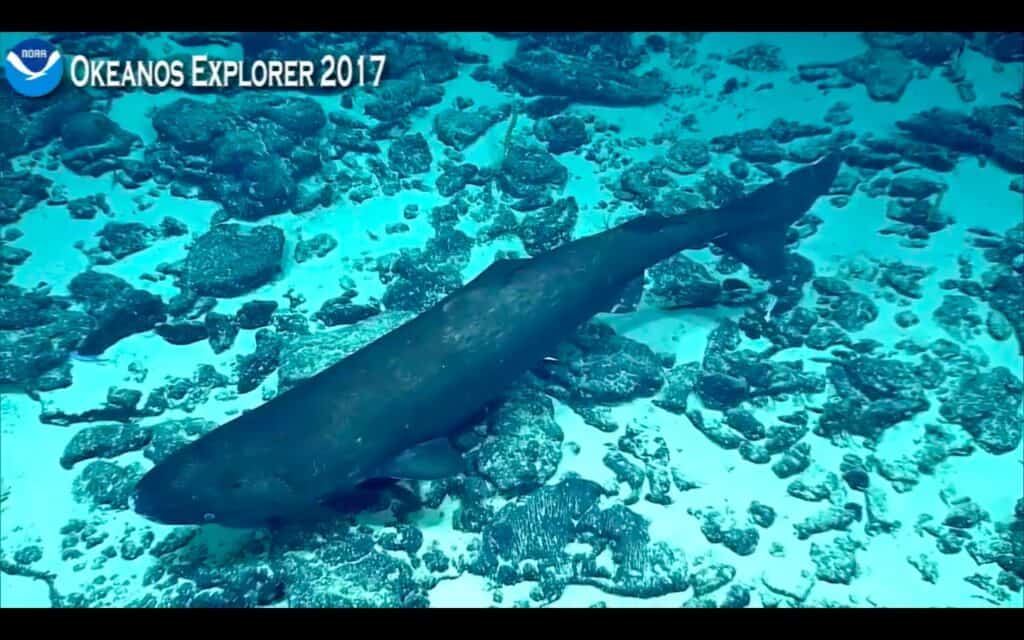
Scientists were shocked to see a Pacific sleeper shark so far out of its habitat in the ocean around the Kavachi volcano.
©Public Domain – License
The Kavachi volcano had never been studied up close prior to 2015 when the team shooting this video arrived. They dropped the camera equipment into the depths, left it there to record, and pulled it back up to analyze the results.
They marveled at some of the sea life they saw meandering the area around the vent. They were stunned, however, when they saw the “brown blob” that appeared to be a shark.
Brennan Phillips and his team were not there to hunt down mysterious sleeper sharks, and they would have been thousands of miles out of place if they were. Pacific sleeper sharks typically live in the Arctic. They have no place hovering near hot volcanos along the equator, just west of Papa New Guinea.
Phillips sent the video to biologists who specialize in sharks, and their response was perplexing — it looked like a Pacific sleeper.
Note that the Southern sleeper, Pacific sleeper, and Greenland shark (all closely-related species) are just slight variations upon one another. That means there’s a chance the shark was misidentified.
Still, the video above catches an erroneous glimpse of aquatic behavior scientists doesn’t yet understand.
Where Do Pacific Sleeper Sharks Live?
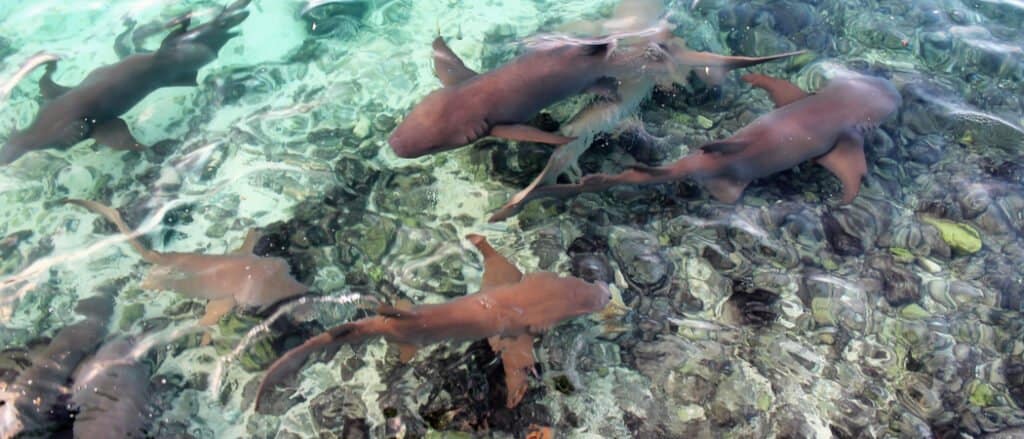
Scientists are only able to study Pacific sleeper sharks when they are forced to travel to shallower waters in search of food.
©shweta.onlinetester/Shutterstock.com
Pacific sleeper sharks were first discovered off the coast of Alaska. They had only been spotted there and amongst the adjacent waters of the Bering Sea in Russia, as well as the California coastline prior to the discovery of the volcano-dwelling outlier. Due to their residing in the coldest and deepest parts of the ocean, scientists were only able to study them infrequently when they were forced to travel to shallower waters in search of food.
Alaskan Fish & Wildlife researchers even suspect Pacific sleepers of devastating the Steller sea lion population. All of this is to say that you can definitely categorize Pacific sleeper sharks as one of the animals that “lurk in the deep ocean.”
Is It Normal for a Pacific Sleeper Shark to Live in a Volcano?
Scientists are still debating this question themselves. While a volcanic vent was never known to be the home of a sleeper shark prior to this incident, we know they are amongst the most elusive and hard-to-study marine life, meaning they could have been hiding there all along without anyone ever noticing. It will take further expeditions to the Kavachi volcano, as well as a lot of luck and patience in order to replicate this miraculous discovery and answer this question once and for all.
The Kavachi Volcano
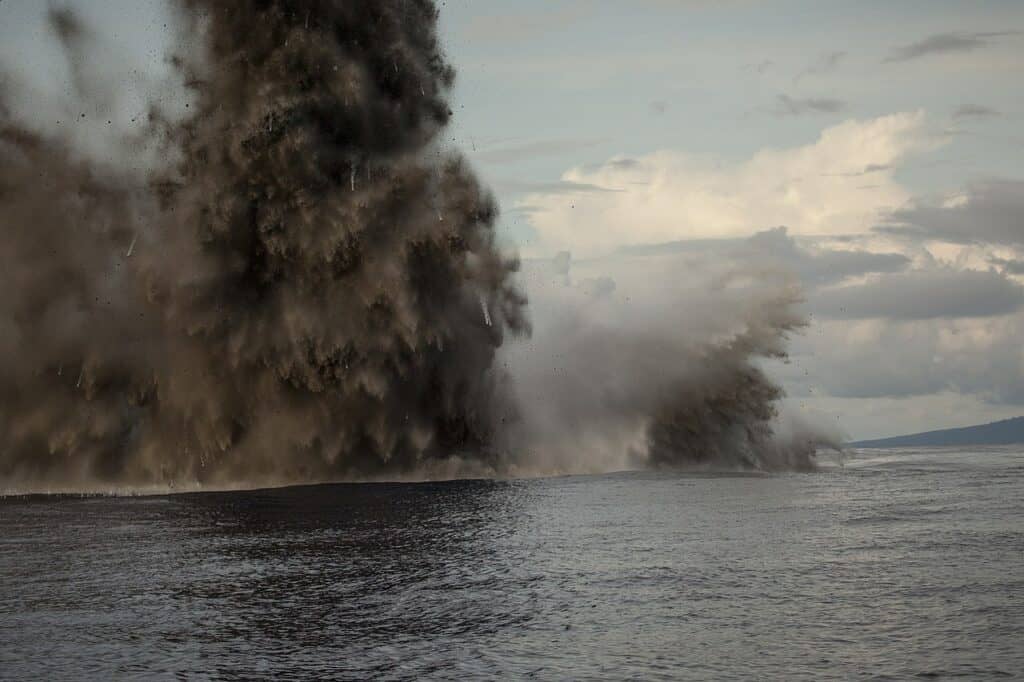
The eruptions of the Kavachi volcano can be seen above the surface of the water.
©Alex DeCiccio / Creative Commons – License
Kavachi is an active volcano off the Western Province of the Solomon Islands. It’s a submarine volcano, which means It’s an underwater vent capable of producing lava and shooting debris high above the water level.
The vent is just 66 feet below the ocean surface, so eruptions cause a variety of visible spectacles whenever they occur. Those eruptions manifest in a number of ways depending on the conditions of the vent prior to the eruption.
It erupts every few years and releases so much lava that small, short-term islands form afterward. They wash away because they’re too small to defend against erosion from waves, but the remains of these islands make for a dynamic ocean floor.
Pacific Sleeper Shark vs. Greenland Shark
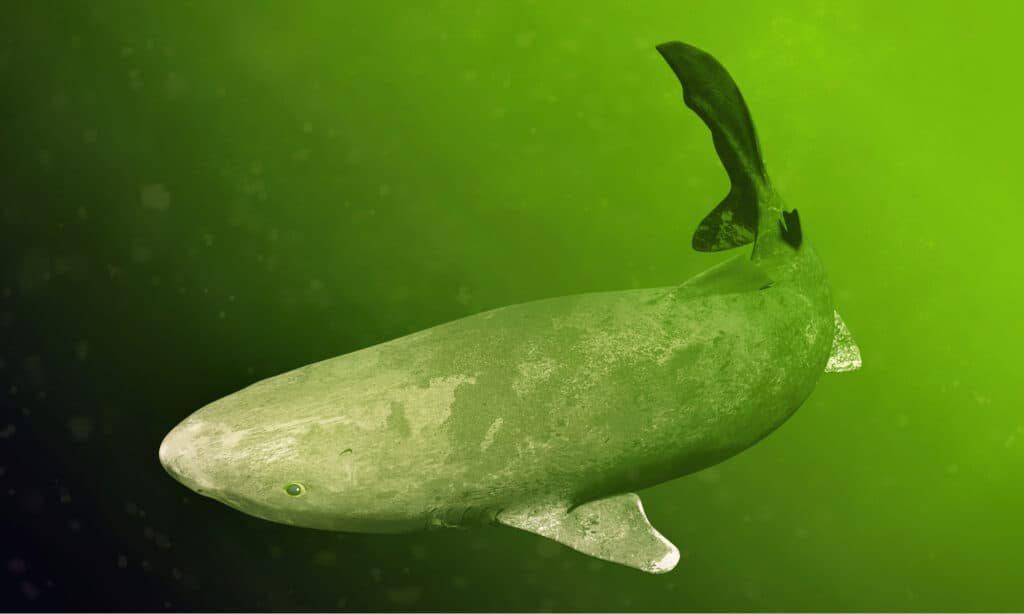
Some scientists believe the shark found in the volcano could have been a Greenland shark.
©Dotted Yeti/Shutterstock.com
One of the Pacific sleeper shark’s closest relatives is the Greenland shark. Both of them inhabit intensely cold waters and share many physical traits, including tiny eyes, a rounded snout, and comparatively small fins in regard to their massive bodies.
Greenland sharks are some of the largest sharks alive today, with some of the largest measuring up to 24 feet. Pacific sleepers are much smaller than their relatives at about 12 feet long on average.
Greenland sharks are not as stealthy or mysterious as the Pacific sleeper and have been well known to live in a variety of environments from the Atlantic to the Arctic oceans. This has led many scientists to believe that it would be more plausible that the shark found in the video was not a Pacific sleeper after all.
Thank you for reading! Have some feedback for us? Contact the AZ Animals editorial team.



